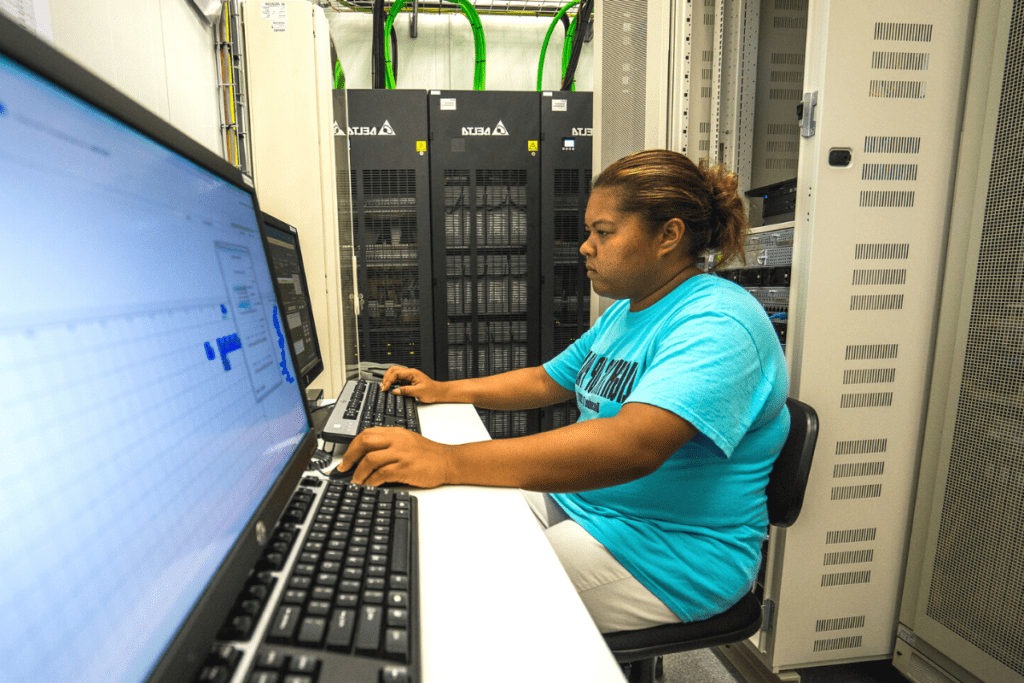This International Women’s Day theme of DigitALL explores the impact of the digital gender gap on widening inequalities and promotes the inclusion of women and other marginalized groups into technology. This is particularly important in the Pacific.
The COVID-19 pandemic starkly exposed the digital divide. As lockdowns forced the world to pivot to online work, education, and service delivery, significant inequalities in access to technology were revealed, particularly between men and women. While the internet became a lifeline for many, those without it faced significant economic and social exclusion.

The Pacific Island region has the world’s lowest mobile internet penetration rate at 18% and a technology divide among genders across all countries, according to the report Pacific Digital Gender Scorecards. In Papua New Guinea, for instance, women are 10% less likely than men to own a mobile phone, and 23% less likely to use mobile internet.
While rates of digital inclusion are slowly improving, there is still a long way to go, according to the forthcoming Women’s Economic Empowerment in the Pacific report. Digital and mobile phone usage reflects existing patterns of inequality across the region. Women experience significant barriers in accessing digital technology, with the cost of handsets and credit being the most prohibitive. This is compounded by systemic and structural barriers such as discriminatory gender norms, lack of access to energy, and limited official documentation, such as ID documents.
The economic case for improving women’s access to technology is compelling. Pacific women have already reported many business benefits of digital technology, including reaching new markets, reducing travel costs, using applications, and ordering supplies. Technology offers access to financial and other services and promotes small business expansion. Online business services are widely cited as an improvement for women in business, as has happened with online business license applications in Tonga.
UN Women estimates that excluding women from the digital world in the last decade has reduced the GDP of low- and middle-income countries by $1 trillion. Without action, this figure could balloon to $1.5 trillion.
The economic case for improving women’s access to technology is compelling.
The digital economy also offers significant untapped employment and income prospects for women. The World Bank estimates that improved Internet access and connectivity could add US$5 billion to GDP in Pacific Island Countries and close to 300,000 jobs by 2040. Without further efforts to improve access, women risk being left behind.
To avoid this scenario, priorities to improve the digital inclusion of women and girls in the Pacific should include:
- Investments to ensure cost-effective technology is available.
- Training focused on how current and emerging technologies can help women participate in the economy, including access to finance and markets.
- Creating awareness of women’s rights pertaining to technology, including privacy, safety, and the risks and prevention strategies for online violence and harassment.
- Expanding research, particularly around understanding country-level barriers that women face in owning and using mobile phones (access, affordability, safety, and security).
- Developing guidance for mobile operators, internet companies, policymakers, and regulators in overcoming barriers to access for women.
- Strengthening regulations and access to digital technologies that promote crowdfunding and peer-to-peer lending so women’s access to finance is improved.
- Creating awareness and access to digital service providers that enhance entrepreneurship, including point-of-sale devices and quick response codes, allowing convenient payment transactions.
Published: 8 March 2023
By Ingrid FitzGerald, Aleta Moriarty
Source: https://blogs.adb.org/
